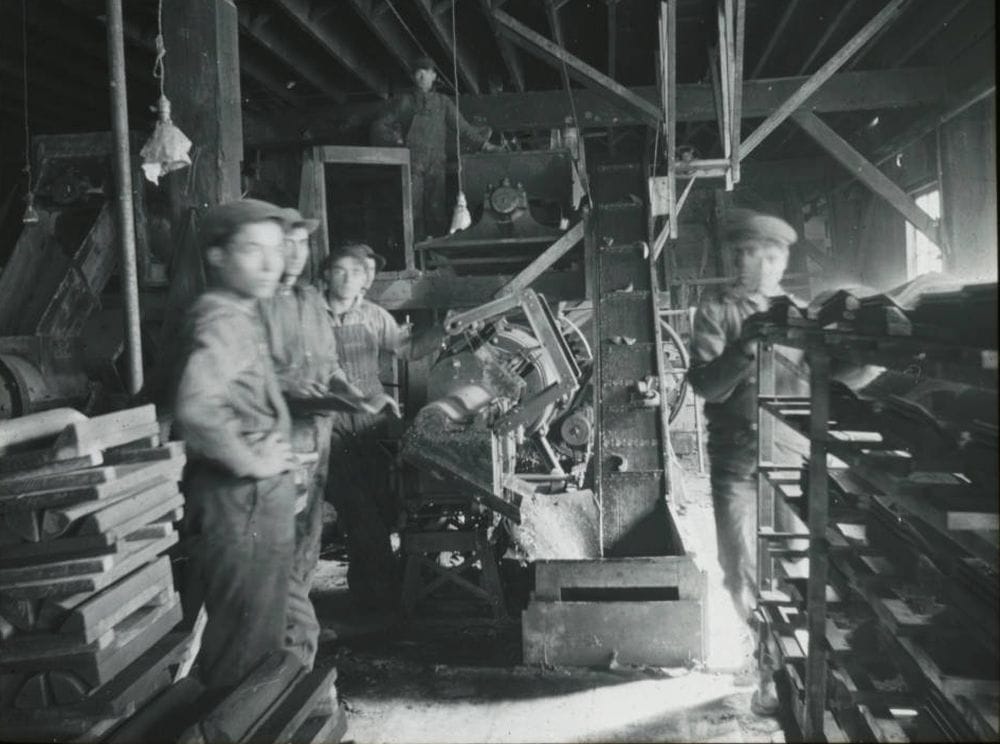
[Image above] A digitized glass slide showing unidentified workers making roofing tile on an auger machine at Ludowici-Celadon Company’s plant in New Lexington, Ohio, circa 1900–1908. Credit: ACerS
In the 125 years since The American Ceramic Society was founded, the ceramic industry experienced a remarkable evolution. What started as a community focused on the traditional trades of refractories, whitewares, and structural clay now encompasses many advanced applications in the electronic, energy, and biomedical sectors as well.
But the traditional ceramic industries remain a core part of our community. These industries, such as refractories, make the production of our advanced materials possible, while other industries, such as terracotta, are experiencing a resurgence as people look to adopt more sustainable construction practices.
Recognizing the impact of these products on society can be difficult due to the ceramic industry’s somewhat hidden nature. But some recent projects are helping bring the history of these traditional industries to light.
In the February 2024 episode of Ceramic Tech Chat, David Jensen of Ludowici Roof Tile shared the delightful story of how his interest in Ludowici’s history led to the discovery of a glass slide collection created by ACerS founder Edward Orton Jr. This collection, which consists of more than 800 glass slides, does an “incredible” job of capturing every variety of ceramic industry that existed in the early 1900s, according to Jensen.
“I can’t tell you how many photos he [Edward Orton Jr.] has gotten of shale banks just showing the big pile of shale and documenting, ‘Oh, I like this section of the shale bank. I don’t like this section of the shale bank.’ It’s great commentary, and it’s incredible just to see how thorough he was in analyzing this and documenting the production, their manufacturing, their storage techniques,” Jensen says in the episode.
In a turn of good fortune, Jensen was put in touch with the Columbus Metropolitan Library, who offered to digitize the whole collection and make the slides publicly accessible online as part of a Columbus area history project. The slides that have been digitized so far can be found at this link.
While this project serves as a great remembrance of ACerS’ 125 years, the city of Collinsville, Okla., is also coordinating a special ceramic-based project to celebrate its 125th anniversary this year: laser-engraved commemorative bricks.
As explained on the City of Collinsville website, natural gas was discovered near Collinsville in the early 1900s. This discovery led to the establishment of a brick plant that at full capacity employed 40 to 50 men, making it one of the largest brick plants in the state. Bricks from this plant were shipped all over the United States.
In 1913, the bricks from this plant were used to pave the main streets of Collinsville—some 50 blocks—as well as to construct many of the buildings and several homes in Collinsville. Now, as part of the city’s 125th anniversary celebrations, volunteers gathered up and laser engraved 125 of these bricks, which the city is selling for $125 on its website. Proceeds from this sale will help fund the year-long anniversary celebration.
The video below offers a look at the laser-engraved bricks that are available for purchase. Additionally, this webpage by the Oklahoma Historical Society provides a deeper look at the brick manufacturing industry across the state in the late 19th and early 20th centuries.
